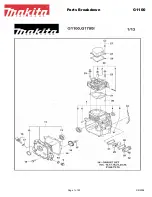
SiBE041025
Main Functions
Function and Control
11
1. Main Functions
1.1
Frequency Principle
Main Control
Parameters
The compressor is frequency-controlled during normal operation. The target frequency is set by
the following 2 parameters coming from the operating indoor unit:
The load condition of the operating indoor unit
The difference between the room temperature and the target temperature
Additional
Control
Parameters
The target frequency is adapted by additional parameters in the following cases:
Frequency restrictions
Initial settings
Forced cooling operation
Inverter Principle
To regulate the capacity, a frequency control is needed. The inverter makes it possible to vary
the rotation speed of the compressor. The following table explains the conversion principle:
Drawing of
Inverter
The following drawing shows a schematic view of the inverter principle:
Phase
Description
1
The supplied AC power source is converted into the DC power source for the present.
2
The DC power source is reconverted into the three phase AC power source with variable
frequency.
When the frequency increases, the rotation speed of the compressor increases resulting
in an increased refrigerant circulation. This leads to a higher amount of the heat
exchange per unit.
When the frequency decreases, the rotation speed of the compressor decreases
resulting in a decreased refrigerant circulation. This leads to a lower amount of the heat
exchange per unit.
50 Hz
60 Hz
Refrigerant circulation rate (high)
freq=
constant
high f
low f
freq=variable
capacity=
variable
Refrigerant circulation rate (low)
high speed
low speed
(R2812)
Amount of heat
exchanged air (large)
Amount of heat
exchanged air (small)
AC
po
w
e
r
DC
po
w
e
r
Amount of heat
exchanged air (large)
Amount of heat
exchanged air (small)
















































